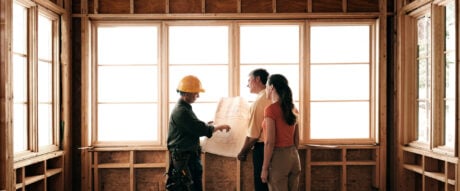It’s not often that Canada shakes up its residential mortgage rules, so when the Department of Finance announced two changes to the nation’s lending guidelines on September 16, it raised the eyebrows, pulses and the expectations of many with a stake in the country’s housing market.
According to the announcement, the cap on insured mortgages will be increased from $1 million to $1.5 million, while 30-year amortizations will be available to all first-time home buyers and anyone purchasing new construction. These changes will go into effect December 15, 2024.
Both measures are intended to improve affordability for thousands of Canadians. The benefits will be short-lived if a widespread boost to buying power triggers a run-up in home prices.
Let’s take a look at the impending changes and see whether they’ll help or hinder your pursuit of a home.
Smaller down payments, more debt
Homes worth $1 million or more aren’t eligible for mortgage default insurance, and require buyers to make a 20% down payment. Once the insured mortgage limit increases, a 20% down payment will only be mandatory for homes worth more than $1.5 million.
Canada’s minimum down payment structure will be left as-is. A buyer will be able to put down $75,000 on a million-dollar home rather than the $200,000 that’s currently required.
“Plain old housing affordability really benefited from the move,” says Phil Soper, president and CEO of Royal LePage.
“The housing market’s gone through the most significant downturn since the early nineties, so it’s a good time to introduce a program that will stimulate it. The market can handle it without overblown house price inflation,” Soper says.
That’s debatable.
Improved affordability, plus falling interest rates, plus years of pent-up demand sounds an awful lot like the formula for a feeding frenzy. Soper himself admits home prices could see double-digit increases by the second quarter of 2025.
What’s certain is that lower down payments create larger mortgages, higher interest costs and potentially gargantuan monthly payments.
Those who can get approved, especially those using the minimum down payment allowable, are going to be pancaked by their mortgages.
“A family that couldn’t afford a $1 million home, we’re going to let them put $100,000 down on a $1.5 million mortgage. So now they’re going to owe $1.4 million, and that CMHC [insurance] premium is probably going to be another $100,000,” says Chris Turcotte, president of Centum Financial Group.
In Turcotte’s scenario, a 4% interest rate and a 25-year amortization would generate total mortgage costs of just under $2.3 million. The monthly payment required to make the math work? $7,659.
“And we get to pat ourselves on the back that we made homeownership more available — not more affordable, because that’s the last thing we’ve done,” Turcotte says.
The cost of increasing housing supply
Under the new rules, first-time buyers and all buyers of new-build homes will have access to 30-year amortizations on insured mortgages. This guideline builds on a recent tweak, launched August 1, 2024, that made first-timers eligible for 30-year amortizations on new construction.
Deputy Prime Minister Chrystia Freeland characterized the rule change as “a supply-side measure” during a September 16 news conference.
“This is about creating more demand for new builds because we know that, crucially, Canada needs to get more homes built faster. In order to get those homes built faster, more people need to be there buying them,” Freeland said.
Chris Kolinski of iSask Mortgage Brokers Saskatoon feels the government is putting the cart before the horse on home construction.
“At the end of the day, we don’t need more buyers, we need more homes,” Kolinski said in an email. “The reality is that it costs far too much to build homes right now.”
There’s also the matter of whether 30-year amortizations are in a first-time home buyers’ best interest.
By lowering monthly mortgage payments, longer amortizations make mortgages more affordable, but only in the short-term. Kolinski worries that buyers will opt for the longest amortization possible without considering the consequences of an additional five years’ worth of interest.
“That extra five years could cost you an additional $100,000 over the life of your mortgage on a $500,000 home, when you could have just gone with the 25-year,” Kolinski said.
Preparing for the new rules
If you’re eyeing a $1 million-plus property and are afraid prices might spike once these new rules kick in, Soper suggests getting into the market well before December 15.
“If they feel comfortable, they should be in the market today,” he says. “We’ve had a surge of listings and a dearth of demand, so there are properties to buy. There is the ability to make an offer without getting involved in a bidding war.”
Taking advantage of today’s subdued competition, however, means paying today’s mortgage rates. By December 15, another two Bank of Canada rate cuts and softer bond yields could create far cheaper financing options. But who knows where home prices will be by then?
Turcotte says buyers could consider pushing their closing dates until after December 15, at which point they should be able to renegotiate the terms of their mortgages according to the new rules.
If you’re not ready to rush out and buy something just yet, there’s an option for you, too. Ask a mortgage professional to compare how much you might qualify for today versus how much you’ll qualify for on December 15.
“I think any good mortgage broker should welcome that call,” Turcotte says.
DIVE EVEN DEEPER

What Does a $1 Million Mortgage Feel Like?
Average home prices in cities like Toronto, Vancouver and Victoria are now north of $1 million. Here’s what it takes to qualify for and afford a $1 million mortgage — and risks buyers should consider in current market conditions.

Why Negotiating Your Mortgage Renewal Rate Is A Must
Never accept your lender’s initial renewal rate. Negotiating could save you thousands of dollars over the course of your mortgage’s next term.



